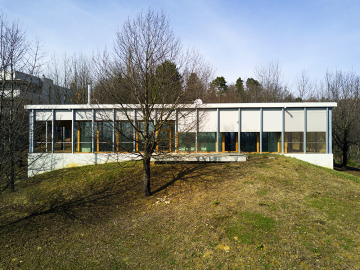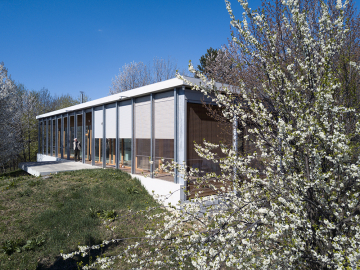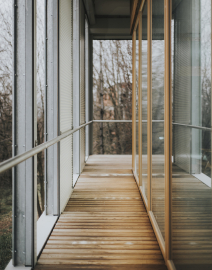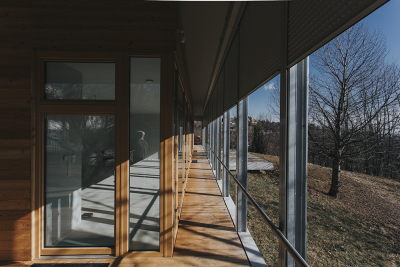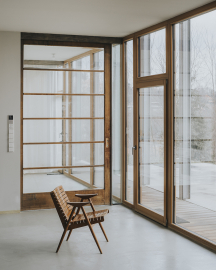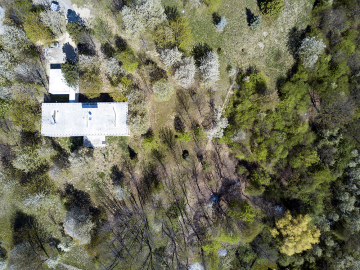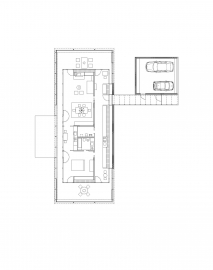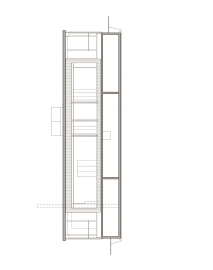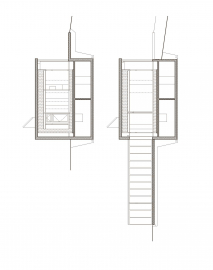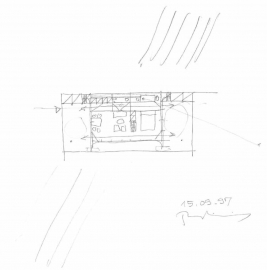House for Two
House for Two is a work in progress that inspires to consider the gradual unification of the concepts of house and monument and the future of new architecture in the context of posthumanism-a theoretical approach attempting to redefine the role of human being in today’s anthropocentric era and the impact of technology and biology on the continuity of life.
”The program was updated as we changed with every passing year. The house is not conceived of as just a closed program, but rather as an integration of the house and everything that happens on the land itself” says Budimirov about the house designed for himself and his wife. The placement of the house on the plot is based on the principle of minimal intervention in the existing environment. It is designed using modules of 120cm in many various versions. The location did not change, nor did the clients. The features that remained constant over the course of 50 years were the desire for a one-storey building (the house was meant to provide ease of movement for elderly people), and a strong connection with the terrain. This connection inspired the idea of the creation of a passive house: a structure that is at once energy efficient, comfortable, economical, and eco-friendly.
The house was built on land belonging to the architect’s family on Perjavica in Zagreb, in a hilly suburb situated at the foot of Mt Medvednica. The design of the house is based on an interaction with its natural surroundings and the living habits of its users, through interpretations of long-lasting materials, energy-efficient technologies, and a floor plan open to individual interpretation. The house is a place open to new developments and can therefore exist in a state of continual change, resisting the possibility of becoming a monument in the classic sense of the word. The house is therefore not characterised by either design or form, so much as by the fact that it is an integral part of its surroundings, and its technical and engineering strategies. It is not a neutral box, a container that could hold anything, although in its simplicity it can appear ordinary. But it is not without an identity. It clearly reflects the aspirations and ideals of its creator. Contextual precision in its design makes it unique and expressive, as well as the character of its sparse interior, in which nothing is unnecessary, and every item has a deep meaning.
With an awareness that everything is energy as a starting-point, in a passive house insulation is most important. To take advantage of readily-available solar energy, the southern side of the house is made completely of glass, as this is the place where the most energy is concentrated. The eastern and western sides are likewise glass, so that ultraviolet rays can heat the interior from three sides without obstruction and can reflect off the objects in the interior. The concrete northern wall creates insulation from atmospheric influences, and acts as a link between the roof with its solar panels, and the floor slab, which was necessary as the terrain is marl, with a diminished load-bearing capacity. Into this well-insulated layer was placed a wooden, glass structure. The heating and ventilation of the house is regulated using devices which are in a cabinet in the hallway, which contains all the technical and energy-related controls for the entire house. The house loses an exceptionally small amount of energy on a daily basis. Rainwater from the flat roof is collected in a cistern in the basement and is used for flushing out the sanitary facilities and washing the terrace.

